Asian American, Native Hawaiian, and Pacific Islander Heritage Month Booklist
May 02, 2022
We see you, and we read you. Here are two reading recommendation lists focused on the Asian American community and the Native Hawaiian and Pacific Islander communities of authors and books.
In books, there are reflections of ourselves and a glimpse of our antitheses alongside innumerable variations of life in between. And it’s a lot easier to understand and respect all sides of the same story in the safe space between the pages of a book.
We have an obligation as human beings in an unequal world to recognize and value lives unlike our own. Reading diverse books widens our perspective of the world, hopefully encouraging us to progress in our everyday lives with greater empathy and esteem for the expansive array of existence we participate in.
We see you, and we read you.
•••
Asian American, Native Hawaiian, and Pacific Islander (AANHPI) heritage month is this month.
There is an unfairly vast number of countries, peoples, cultures, and perspectives distilled into this six-letter acronym. And not just for the purposes of curating a recommended reading list, either. The Native Hawaiian and Pacific Islander (NHPI) community’s struggles are statistically higher than Asian’s and Asian American’s–with more fatalities due to the COVID-19 pandemic and (barring the pandemic) elevated probability of developing health issues.
This does not negate the continuing inequality and in some cases worsening discrimination of Asian Americans in our country. Most notably: Asian American hate crimes rose 11% across the country in 2021.
While the federal government mandated in 1997 that Asian Americans and Native Hawaiian and Pacific Islander data was to be separated, it is a slow process. So we’re doing what we can with a book blog and separating our lists of recommended reading of Asian American authors and stories from those of Native Hawaiian and Pacific Islanders.
Asian American Authors & Stories
Review | Minor Feelings: An Asian American Reckoning by Cathy Park Hong, One World
I just finished reading Minor Feelings by Cathy Park Hong, which beautifully weaves together stories of her pivotal art school friendships, her attempt at stand-up comedy inspired by Richard Pryor, immigrants’ “proud heritage of bad English” which influences her poetry, and a close examination of the 1982 rape and murder of artist and poet Therese Hak Kyung Cha, to create a gut punch of a book about being of Asian descent in our country. The titular phrase “minor feelings” perfectly frames a previously hard-to-define set of emotions, for which I am forever grateful to Hong." (BRM)
Review | What My Bones Know: A Memoir of Healing from Complex Trauma by Stephanie Foo, Ballantine Books
As an avid listener of the podcasts This American Life and Snap Judgement, I have listened to Stephanie Foo for years, gravitating towards her voice and loving the way she presents her stories. When I saw she came out with a book, I was drawn to it immediately and also dumbstruck at the life she had to endure during her youth. Most of us cannot even begin to imagine the horrific trauma she was forced to live through as an innocent child.
Growing up her father and mother constantly beat her and threatened her life, with a knife to her throat or driving recklessly with her in the car dancing dangerously close to oncoming traffic or California cliffs. She was hit, threatened, and made to feel less than any person should ever feel by the two people who were supposed to protect her. Constantly parenting her own parents, Foo was never given the love, attention, and nurturing the average child would receive in childhood. This ongoing abuse throughout her childhood and adolescence fostered anger, and rightfully so, along with a loss and confusion of self that she needed to address in order to live a healthy and productive existence.
Suffering from C-PTSD, or Complex PTSD, which is not acknowledged as a legitimate diagnosis in the United States, Foo goes on a lifelong journey to heal from the abuse she endured as a child and learn how to work through all the feelings and trauma she carries as an adult—including the estrangement from her parents that causes confusing and difficult emotions.
Here, she speaks to her research of C-PTSD as soon as she received her diagnosis from her therapist:
The books taught me that when we live through traumatic experiences, our brains take in the things around us that are causing the greatest threat, and they encode these things deep into our subconscious as sources of danger. … It occurs when someone is exposed to a traumatic event over and over and over again—hundreds, even thousands of times—over the course of years.
Through this remarkable self-journey, Foo not only begins to unravel a past that she boxed up in her mind but also creates a healthier and more stable looking future where she can grow from within. She discovers secrets within her family that signifies they knew of the abuse she lived with, but also connected with her inner child which aided in protecting herself from what she experienced as a child. She finds that she has created a family along her life journey full of understanding and present friends and colleagues as well as her boyfriend turned husband and his welcoming, jovial family. Relearning how to nurture her own relationships including with herself, Stephanie, sometimes questions what is the real self and what traits are her diagnosis. She comes to accept that she is a kind, loving, and caring person who has chosen her family in adulthood. We walk with her as she comes to terms with her diagnosis and what happens within the brain when we try to suppress memories or experiences that are traumatic:
Every adaptation our brain makes is an effort to better protect our bodies. Some of these backfire—the deadly result of an overactive stress response. But some might actually be advantageous to our health.
This book, sometimes difficult to read, in the context of how a parent could so mindlessly and cruelly torture an innocent child, is incredibly inspirational as we follow Foo on her quest to understand her abuse, her diagnosis, and her search for what generational trauma looked like in her childhood community and beyond. It shows Foo working through her trauma, researching, asking questions, and bringing us along for the ride as she opens up about her past, her present, and her diagnosis working with several therapists.
Stephanie Foo works through the trauma of her abuse and also looks back to her family's history. Otherwise known as generational trauma. What did her parents experience? What did her aunts and uncles, grandparents and great-grandparents experience? War, grief, trauma, of their own, passed down through their DNA, their blood and into her.
I want to have words for what my bones know. I want to use those gifts when they serve me and understand and forgive them when they do not.
A raw and honest memoir, detailing how this amazing woman pulled herself through a horrific upbringing that no one should have to brave, and her healing journey after being diagnosed with C-PTSD, What My Bones Know brought tears to my eyes and joy to my heart reading how Foo triumphed after trauma.
You can hear one of Stephanie’s most listened to stories, The Favorite for This American Life. (EPP)
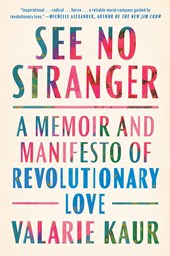 Review | See No Stranger: A Memoir and Manifesto of Revolutionary Love by Valarie Kaur, One World
Review | See No Stranger: A Memoir and Manifesto of Revolutionary Love by Valarie Kaur, One World
In 2016, Sikh activist Valarie Kaur inspired millions to ban together during difficult times with her six-minute address at the Metropolitan AME Church. And soon she was being quoted on protest signs as many oppressed groups were unsettled (to put it lightly) by that year's presidential election.
"What if this darkness is not the darkness of the tomb but the darkness of the womb?"
We are again faced with an era made up of layered darknesses: viral infection, climate change, unemployment, and police brutality among others, with systemic racism being a driving factor making some people endure the effects of these issues more than others. While our communities continue striving to strip off these layers to reveal light, Valarie Kaur's worldly and spiritual outlook on life provides a bit of solace during this endless fight. She reminds us that the largest changes are made up of the smallest individual choices, and that love should serve as our anchor, because:
"'Love' is more than a feeling. Love is a form of sweet labor: fierce, bloody, imperfect, and life-giving—a choice we make over and over again. If love is sweet labor, love can be taught, modeled, and practiced. This labor engages all our emotions. Joy is the gift of love. Grief is the price of love. Anger protects that which is loved. And when we think we have reached our limit, wonder is the act that returns us to love."
Kaur brings up the Oak Creek Sikh Temple massacre, which happened just over 10 miles from Porchlight Book Company, across the street from a bowling alley that (pre-COVID19) was regularly filled with neon-lit kids' birthday parties and adult bowling league nights catered with pizza, beer, burgers, and wings. In such an unassuming area of the Midwest occurred "the most violent hate crime against Sikhs in U.S. history," which Kaur says changed her understanding of the term "victims." She says:
"Sikhs had something to teach America about how to respond to the violence of white nationalism, socially, politically, and spiritually. I saw the practices of revolutionary love at work—we wondered, grieved, and fought; we raged, listened, and reimagined the future."
See No Stranger interlaces Kaur's memoirs with the guidance of other wise thinkers, scientists, and activists to teach readers how to love and empathize with others (even our opponents) and how to love ourselves as the shifting, growing, learning beings we are. Combining these abilities to care is important, because:
"[...] Loving only ourselves is escapism; loving only our opponents is self-loathing; loving only others is ineffective. All three practices make love revolutionary, and revolutionary love can only be practiced in community."
Be inspired in less than half an hour when you watch Valarie Kaur's captivating TED talk "3 lessons of revolutionary love in a time of rage." (GMC)
Review & Bestseller | My Life in Full: Work, Family, and Our Future by Indra Nooyi, Portfolio
Indra Nooyi told everyone she wasn’t going to write a memoir. She wanted to devote herself to writing a “manual for fixing how we mix work and family.” It is a topic she has had occasion to think about, and been asked to address, more often than her male peers. Among the group of global leaders she regularly found herself in the room with after she became CEO of PepsiCo, she discovered that the conversation got around to many topics, even as far-flung as “flying to Mars,” but:
Family—the actual messy, delightful, difficult, and treasured core of how most of us live—was fringe.
Once she sat down to write that book, however, she found that the work she wanted to do on the topic had already been done, “from every angle, in every corner of the world.” Her recompiling the evidence about the economic benefits of early childhood education or paternity leave, she discovered, wasn’t really needed. But what she has experienced, and how she came to understand the issues on a personal level, and telling her story as one of the first generation of women to attend business school in India, as the first woman of color and immigrant to lead a Fortune 50 company in America? Well, that certainly hadn’t been done before, and only she could do it. I am so glad she did, because the book is really good. Reading about her childhood in Madras, her family (especially her reflections on her mother and grandfather), her education, the cities in India it took her to and what they were like at that time, and even the rooms she grew up in, is all endlessly entertaining. She recounts the story of her learning guitar (at first, against her mother’s wishes) and starting a band in high school, the LogRhythms, the only girl group in Madras at the time, and of the moment after retiring from PepsiCo when she and her husband decided to hang some of the “twenty or so guitars” she had acquired over her life and career—including “acoustics signed by the Chicks and Blake Shelton”—on the wall of their home. Similarly, you’ll learn about her tenure at PepsiCo, of course, about her purpose-driven, performance-oriented leadership philosophy and strategy, but also about her first job out of business school selling thread door-to-door for the Alexander Thread division of Mettur Beardsell. It was there, she writes:
I learned that business is done a few spools of thread at a time and that I owed my customers a duty of care. They were buying my product—and my word—and I had to listen carefully and deliver for them.
True to the book she originally set out to write, she also addresses that “duty of care” much more widely, and the duty we as a society have to build in more support and greater care infrastructure for working people—specifically women—and their families. Such a focus on care is not only the right thing to do but will “be a competitive advantage for every company, community, and state where we make it happen.” And with people like Indra Nooyi committed to it, maybe we finally can make it happen. (DJJS)
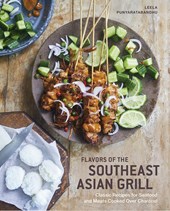 Cookbook Review | Flavors of the Southeast Asian Grill: Classic Recipes for Seafood and Meats Cooked over Charcoal by Leela Punyaratabandhu, Ten Speed Press
Cookbook Review | Flavors of the Southeast Asian Grill: Classic Recipes for Seafood and Meats Cooked over Charcoal by Leela Punyaratabandhu, Ten Speed Press
It all started with an underwhelming chicken satay at an average American Thai restaurant. While she chewed on the bland, reheated meat on a stick, Leela Punyaratabandhu had a revelation. “The best place outside Southeast Asia to experience the region’s grilled and smoked dishes as they’re meant to be enjoyed is not, in fact, at an Asian restaurant. It’s in your own backyard.” For her third cookbook, the writer of the blog “She Simmers” shares with us dishes from the grills of her childhood in Thailand and the region at large as she travels between her homes in Chicago and Bangkok. Based on the Southeast Asian style of composing a meal (rice as the centerpiece and everything else is an accompaniment), the recipes in the book are highly seasoned to be the perfect counterbalance to the blandness of plain rice. You will be the envy of the neighborhood as your backyard is filled with aromas from Smoked Shrimp with Chile-Lime Dipping Sauce, Madura Chicken Satay with Easy Rice Cakes (which corrects my misconception that satay should be made with a long piece of chicken threaded onto a skewer), Grilled Pork-Sticky Rice Burgers (inspired by the sticky rice burgers at 7-Eleven in Thailand), Grilled Stuffed Lemongrass, and Grilled Corn with Coconut Sauce. And while the book is decidedly meat-centric, vegetarians can embrace the lime and fish sauce covered salads or easily swap out a plant-based protein to take advantage of the beautiful side salads or the multitude of sauces (for real, this book could just be sauces and I’d be happy) included here. (BRM)
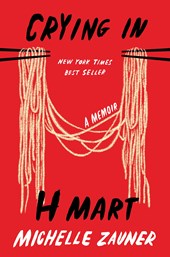 Porchlight Bestseller | Crying in H Mart: A Memoir by Michelle Zauner, Knopf
Porchlight Bestseller | Crying in H Mart: A Memoir by Michelle Zauner, Knopf
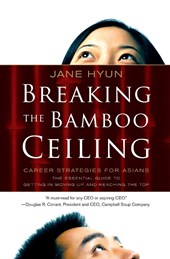 Porchlight Bestseller | Breaking the Bamboo Ceiling by Jane Hyun, HarperBusiness
Porchlight Bestseller | Breaking the Bamboo Ceiling by Jane Hyun, HarperBusiness
The popular media often portrays Asian Americans as highly educated and successful individuals–the Model Minority.
As the ethnic minority with the largest percentage of college graduates, many Asian Americans do enter the professional workforce. However, many of them seem to stall in their careers and never make it to the corner offices.
Leading executive coach Jane Hyun explores how traditional Asian values can be at odds with Western corporate culture. By using anecdotes, case studies, and exercises, Hyun offers practical solutions for resolving misunderstandings and overcoming challenges in an increasingly multicultural workplace. This timely book explains how companies will benefit from discovering and supporting the talents of their Asian employees and shows Asians how to leverage their strengths to break through the bamboo ceiling.
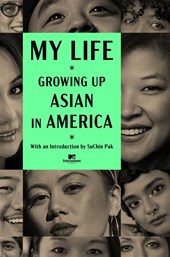 Upcoming Release | My Life: Growing Up Asian in America edited by CAPE (Coalition of Asian Pacifics in Entertainment), MTV Books
Upcoming Release | My Life: Growing Up Asian in America edited by CAPE (Coalition of Asian Pacifics in Entertainment), MTV Books
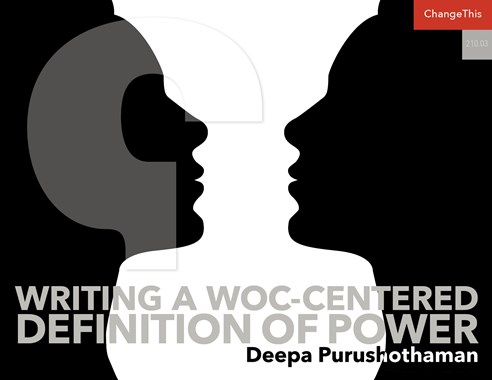
ChangeThis | "Writing a WOC-Centered Definition of Power" by Deepa Purushothaman
"We need to take on systems, not become them. We need to push back on issues, but not in ways that deplete us."
•••
While our coverage of diverse topics and authors is always expanding, we have work to do in highlighting more stories from Native Hawaiian and Pacific Islander authors. If you have recommendations for us to add or to read ourselves, you can email me at gabbi@porchlightbooks.com.
•••
Native Hawaiian & Pacific Islander Authors & Stories
ChangeThis | "Managing with Aloha" by Rosa Say
In Managing With Aloha, Rosa Say discusses how the use of traditional Hawaiian values can change your business and how you view the relationship with your employees and customers.
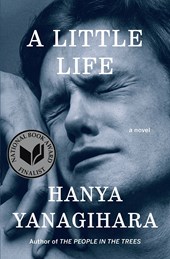 Review | A Little Life by Hanya Yanagihara, Doubleday
Review | A Little Life by Hanya Yanagihara, Doubleday
The photograph on the cover of Hanya Yanagihara’s A Little Life has been haunting me for years. I see it on friends’ bookshelves, staff picks shelves at local bookstores, staring back at me from literary lists of all kinds. Is the person on the cover a man or a woman? Are they in pain or ecstasy? Is the hand theirs or that of a friend or lover? The time has come for me to find out. I’m only on page 25 of the 814 in the paperback version, but I already know that the story of Willem, Jude, BJ, and Malcolm will change the way I view New York when I can visit once again. (BRM)
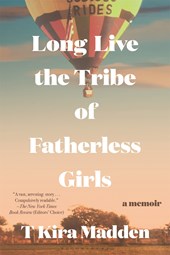 TBR List | Long Live the Tribe of Fatherless Girls: A Memoir by T Kira Madden, Bloomsbury
TBR List | Long Live the Tribe of Fatherless Girls: A Memoir by T Kira Madden, Bloomsbury
Acclaimed literary essayist T Kira Madden’s raw and redemptive debut memoir is about coming of age as a queer, biracial teenager amidst the fierce contradictions of Boca Raton, Florida, where she found cult-like privilege, shocking racial disparities, rampant white-collar crime, and powerfully destructive standards of beauty hiding in plain sight.
As a child, Madden lived a life of extravagance, from her exclusive private school to her equestrian trophies and designer shoe-brand name. But under the surface was a wild instability. The only child of parents continually battling drug and alcohol addictions, Madden confronted her environment alone. Facing a culture of assault and objectification, she found lifelines in the desperately loving friendships of fatherless girls.
With unflinching honesty and lyrical prose, spanning from 1960s Hawai’i to the present-day struggle of a young woman mourning the loss of a father while unearthing truths that reframe her reality, Long Live the Tribe of Fatherless Girls is equal parts eulogy and love letter. It’s a story about trauma and forgiveness, about families of blood and affinity, both lost and found, unmade and rebuilt, crooked and beautiful.
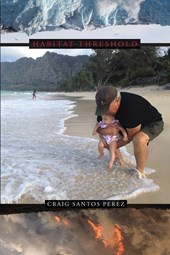 Poetry | Habitat Threshold by Craig Santos Perez, Omnidawn
Poetry | Habitat Threshold by Craig Santos Perez, Omnidawn
A native Pacific Islander, Perez reflects on his hopes and fears for the past, present, and future of Guam.
With Habitat Threshold, Craig Santos Perez has crafted a timely collection of eco-poetry that explores his ancestry as a native Pacific Islander, the ecological plight of his homeland, and his fears for the future. The book begins with the birth of the author’s daughter, capturing her growth and childlike awe at the wonders of nature. As it progresses, Perez confronts the impacts of environmental injustice, the ravages of global capitalism, toxic waste, animal extinction, water rights, human violence, mass migration, and climate change. Throughout, he mourns lost habitats and species, and confronts his fears for the future world his daughter will inherit. Amid meditations on calamity, this work does not stop at the threshold of elegy. Instead, the poet envisions a sustainable future in which our ethics are shaped by the indigenous belief that the earth is sacred and all beings are interconnected—a future in which we cultivate love and “carry each other towards the horizon of care.”
Through experimental forms, free verse, prose, haiku, sonnets, satire, and a method he calls “recycling,” Perez has created a diverse collection filled with passion. Habitat Threshold invites us to reflect on the damage done to our world and to look forward, with urgency and imagination, to the possibility of a better future.
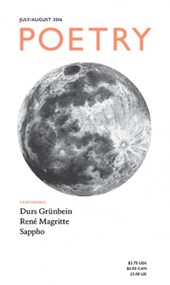 Online Reading | "New Pacific Islander Poetry" from New Poetry Foundation
Online Reading | "New Pacific Islander Poetry" from New Poetry Foundation
"We belong to Oceania. We belong to a diverse sea of moving islands, peoples, cultures, languages, and ecologies. We belong to a legacy of navigation that teaches us how to read the stars, waves, currents, winds, and horizons.
Pacific Islanders peopled Oceania thousands of years ago and developed complex societies based on the values of interconnection, harmony, balance, sustainability, and respect. We named and recognized the sacredness of waters and lands. We storied our new homes with songs, poems, and chants.
We have many names, indigenous and imposed: Hawaiian, Samoan, Chamorro, Tongan, Fijian, Marshallese, Tahitian, Tokelauan, Māori, Palauan, Kosraean, Pohnpeian, Chuukese, Yapese, I-Kiribati, Papua New Guinean, Solomon Islander, Ni-Vanuatu, and more."


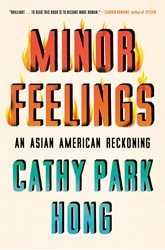
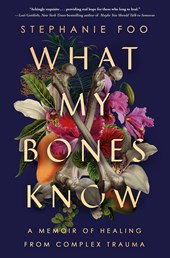
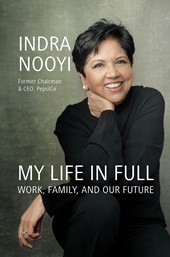
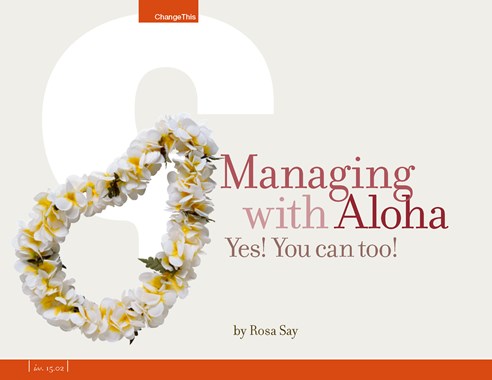



![Flavors of the Southeast Asian Grill: Classic Recipes for Seafood and Meats Cooked Over Charcoal [A Cookbook] Flavors of the Southeast Asian Grill: Classic Recipes for Seafood and Meats Cooked Over Charcoal [A Cookbook]](https://cdn.porchlightbooks.com/assets/images/books/8/48/248/7248/9781984857248.jpg?u=638575718467670000&height=400&width=400&mode=max)









